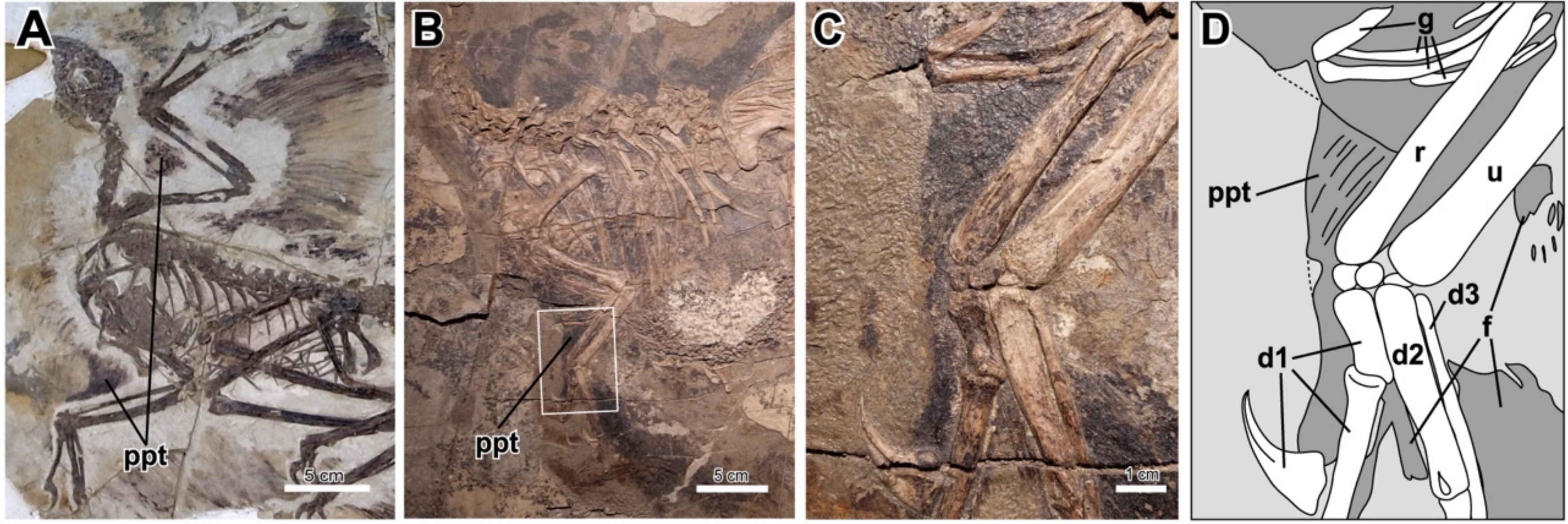24 Feb. () –
Statistical analyzes of upper limb joints preserved in fossils support the evolutionary origin of modern bird wings dates back to a group of non-avian dinosaurs.
We have known for some time that modern birds evolved from certain lineages of dinosaurs that lived millions of years ago. This has led researchers to look at dinosaurs to explain some of the unique features of birds, for example, feathers, bone structure, etc. But there is something special about the wings of birds in particular that aroused the interest of researchers from the Department of Planetary and Earth Sciences of the University of Tokyo.
“On the leading edge of a bird’s wing is a structure called the propagation, which contains a muscle that connects the shoulder and wrist and that helps the fluttering and makes the flight of the birds possible”, explains it’s a statement Associate Professor Tatsuya Hirasawa.
“It is not found in other vertebrates, and has also been found to have disappeared or lost its function in flightless birds, one of the reasons we know it is essential for flight. So, to understand how flight evolved in birds, we must know how propagation evolved. This is what prompted us to explore the distant ancestors of modern birds, the theropod dinosaurs.”
Theropod dinosaurs, such as Tyrannosaurus rex and Velociraptor, had arms, not wings. If scientists could find evidence of an early example of propagation in these dinosaurs, they would would help explain how the modern avian branch of the tree of life got from arms to wings.
However, it is not that simple, since the propagation is made up of soft tissues that do not fossilize well, if at all, so it would not be possible to find direct evidence. Instead, the researchers had to find an indirect way to identify the presence or absence of propagation in a specimen..
“The solution we came up with to assess the presence of a propagation was to collect data on the angles of the joints along the arm, or wing, of a dinosaur or bird,” explains Yurika Uno, a graduate student in the laboratory of Hirasawa.
“In modern birds, the wings cannot be fully extended due to propagation, which limits the range of angles possible between connecting sections. If we could find a similar set of specific angles between joints in dinosaurs, we would be sure that They also had a propagation. And through quantitative analyzes of the fossilized postures of birds and non-dinosaurs, we found the revealing ranges of joint angles that we expected.”
Based on this clue, the team found that propagation likely evolved in a group of dinosaurs known as manirraptor theropods, including the famous Velocirraptor. This was supported when researchers identified propagation in preserved soft-tissue fossils, including those of the feathered ovirraptorosaur Caudipteryx and the winged dromaeosaur Microrraptor. All the specimens they found it in existed before the evolution of flight in that lineage.
This research means that it is now known when propagation arose, and leads researchers to the next question: how did it arise? Why these particular theropod species needed such a structure to better adapt to their environment might be a more difficult question to answer.
The team has already started to explore possible connections between the fossil evidence and the embryonic development of modern vertebrates to see if that sheds any light on it. The team also believes that some theropods could have evolved the propagation not due to any pressure to learn to fly, since its forelimbs were made to grasp objects and not to fly.
The work is published in the journal Zoological Letters.











![[Img #74674]](https://thelatestnews.world/wp-content/uploads/2024/12/Santiago-Ramon-y-Cajal-The-promoter-of-modern-neuroscience-300x200.jpg)
